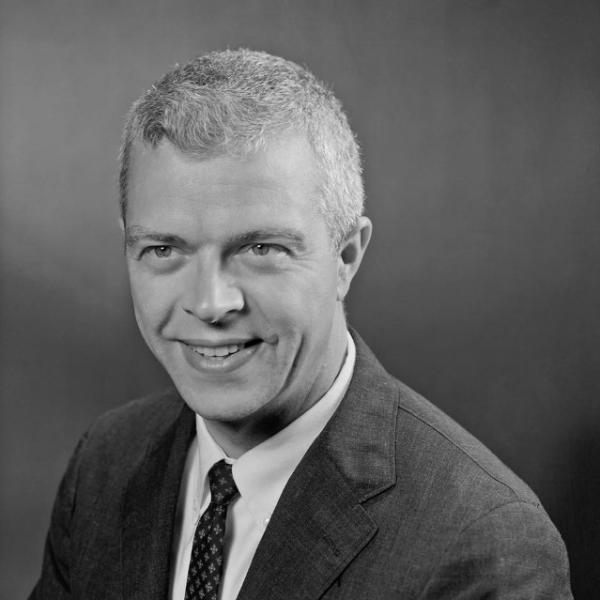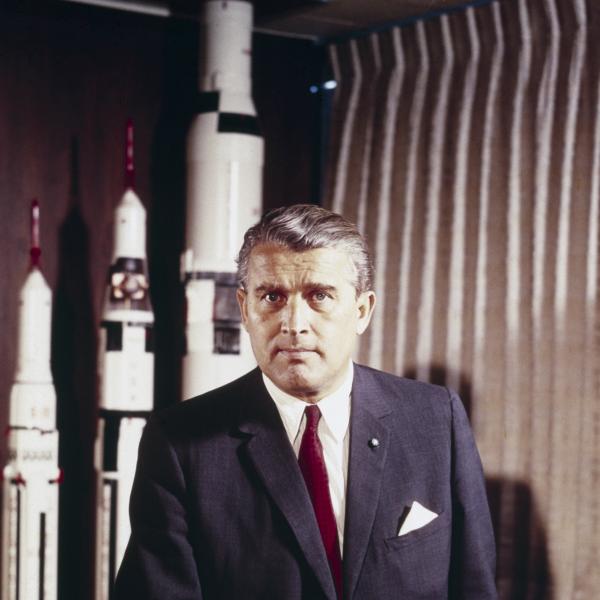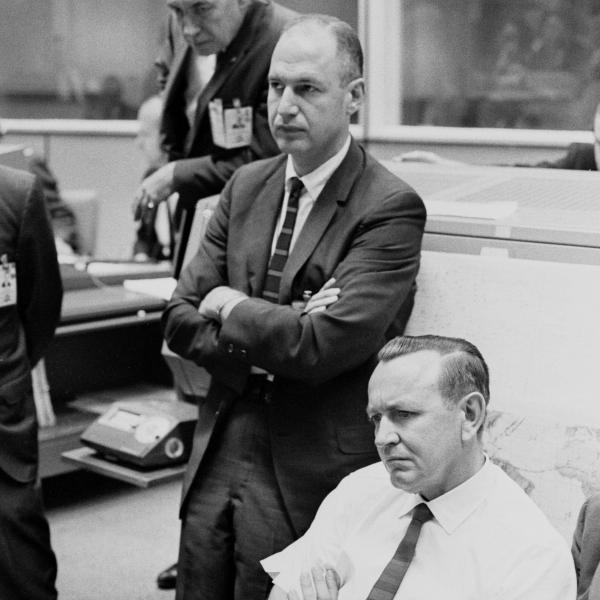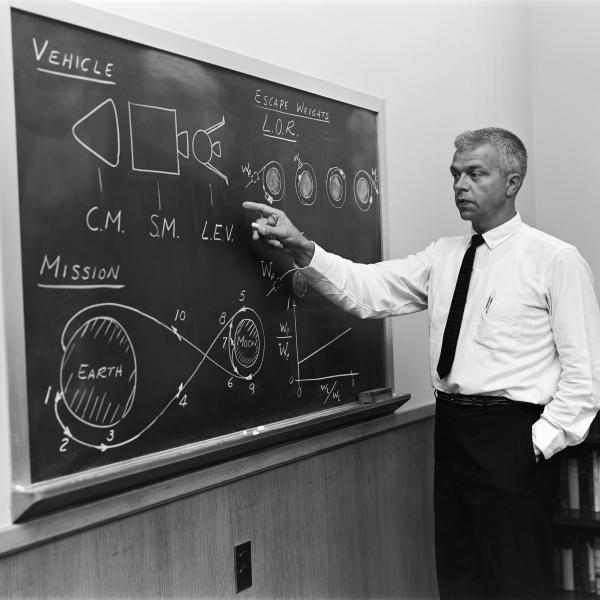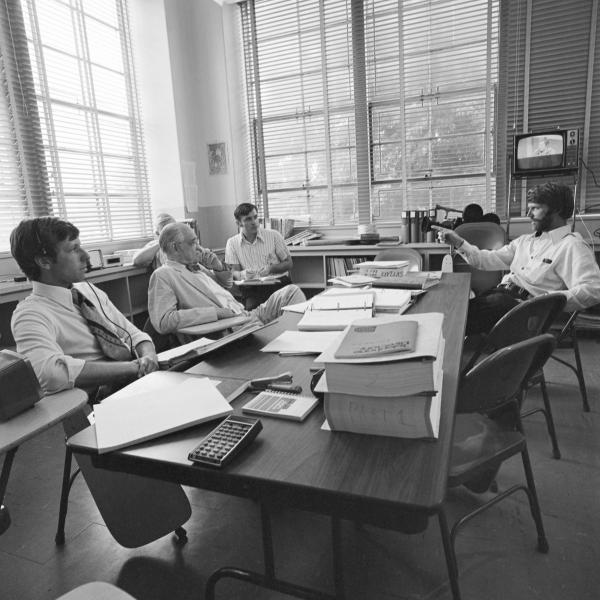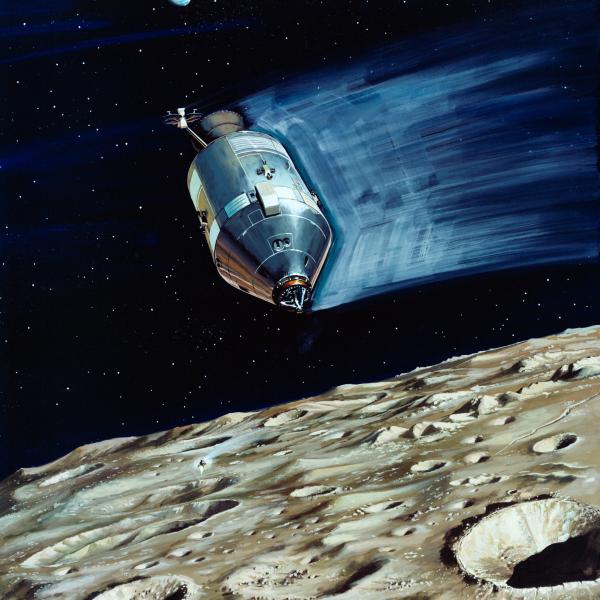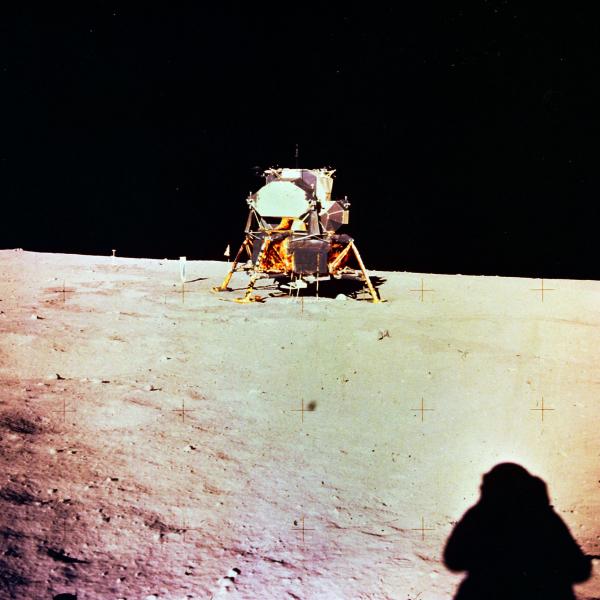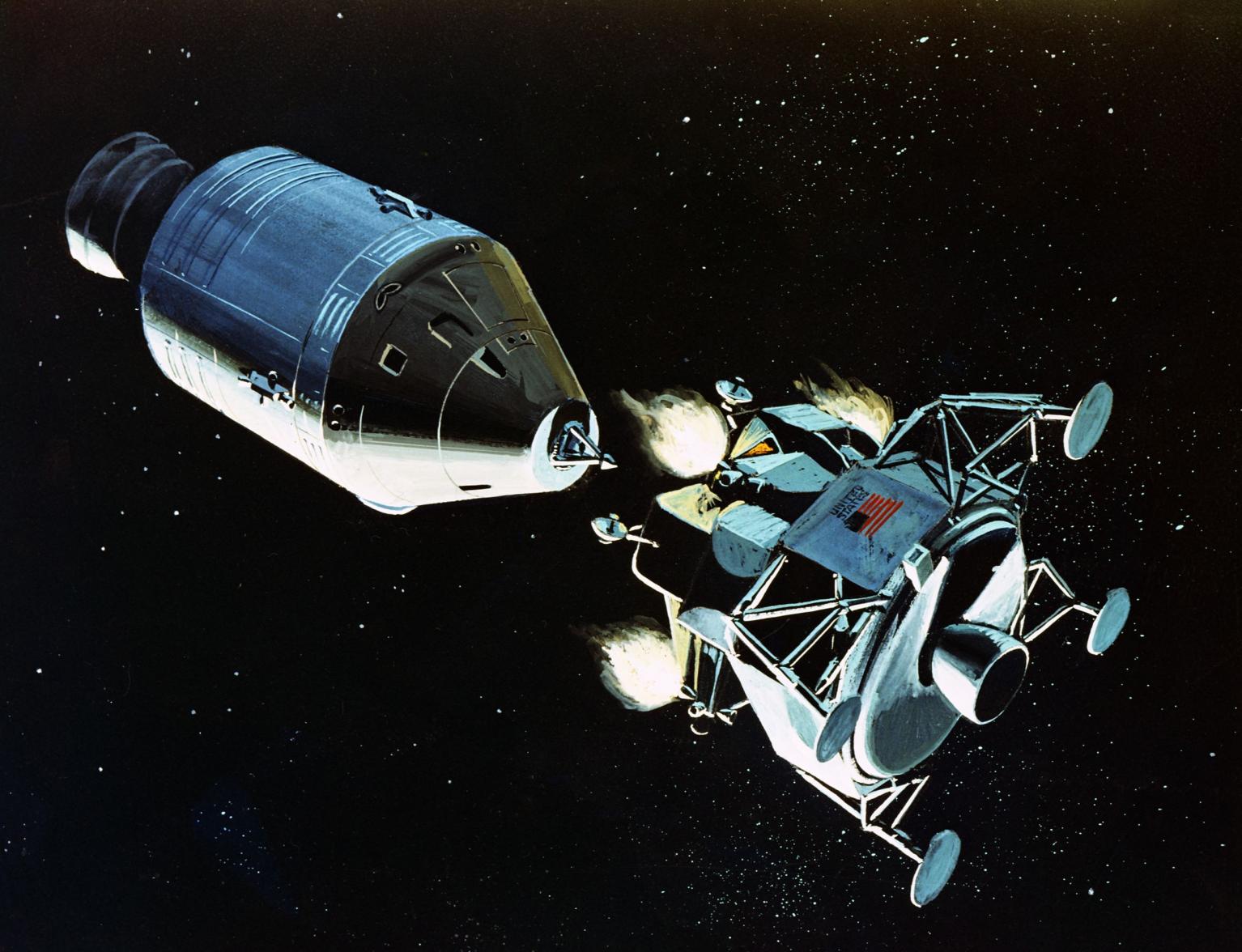
Space Exploration: Lunar Orbit Rendezvous
First we had to figure out how to get to the moon and back. The United States knew how to successfully launch a rocket into outer space, and NASA was pretty confident that they could reach the surface of the moon – but how were they going to return an astronaut back to Earth? Manned spaceflight, and the safe return of these men to Earth, brought life and death challenges to the engineers of the space program.
When the Apollo Program started in 1961, the original method proposed for the moon landing was called direct ascent. The idea was simple, build a rocket large and powerful enough to reach the moon, land tail side down, and then blast off again back to Earth. The execution of the idea however, was massively complicated because of the size of the rocket and the amount of fuel required to achieve it.
A lone voice at NASA, Langley Research Center engineer John C. Houbolt, campaigned aggressively for a different approach. Houbolt argued that direct ascent was impossible to achieve within President Kennedy’s timeline to land on the moon within a decade. Instead, he proposed using Lunar Orbit Rendezvous (LOR). LOR was a system of smaller spaceships housed within a larger Saturn V rocket. With the Saturn V acting as a mothership, one astronaut would stay onboard the larger Command Service Module (CSM) craft outside the moon's atmosphere while two astronauts aboard the smaller Lunar Module craft made the actual moon landing and then would ‘rendezvous’ back and return to the CSM.
What made the LOR method so efficient was that the substantial amount of fuel necessary to return to Earth did not need to be landed on the moon and then launched back out of the moon’s atmosphere. There were two other strategic advantages of the LOR. First, it allowed a clear view for the astronauts to land on the moon surface, rather than looking in a screen to achieve the tail-first direct ascent backwards landing. Second, it provided a “lifeboat” of critical systems in the Lunar Module like electrical power, life support, and propulsion which could be used in the event of a critical CSM system failure.
But, LOR had a major psychological fear factor, a successful rocket rendezvous had never been achieved in space before, and the result of a failure would mean two astronauts abandoned in space with no way to return home. Ultimately, Houbolt’s campaign to the NASA Associate Administrator Robert Seamans led to its successful implementation in the first human mission to land on the moon, and subsequent Apollo missions.
